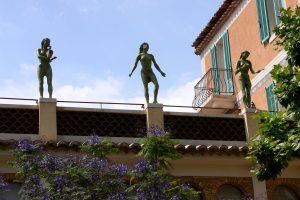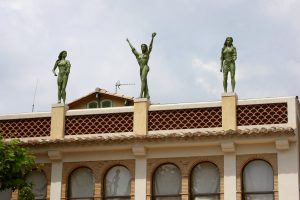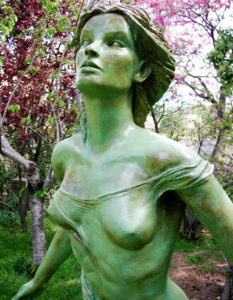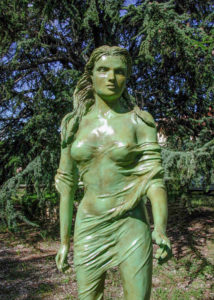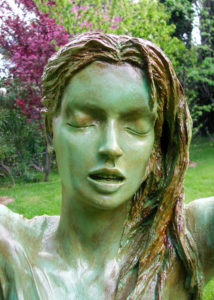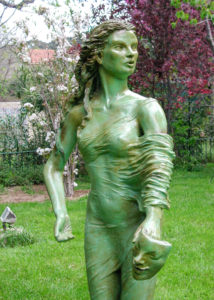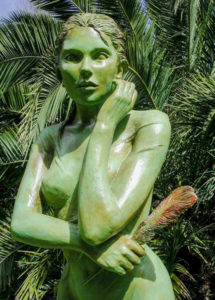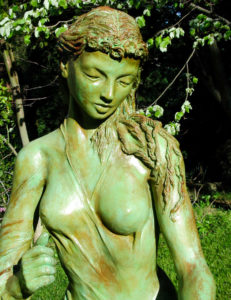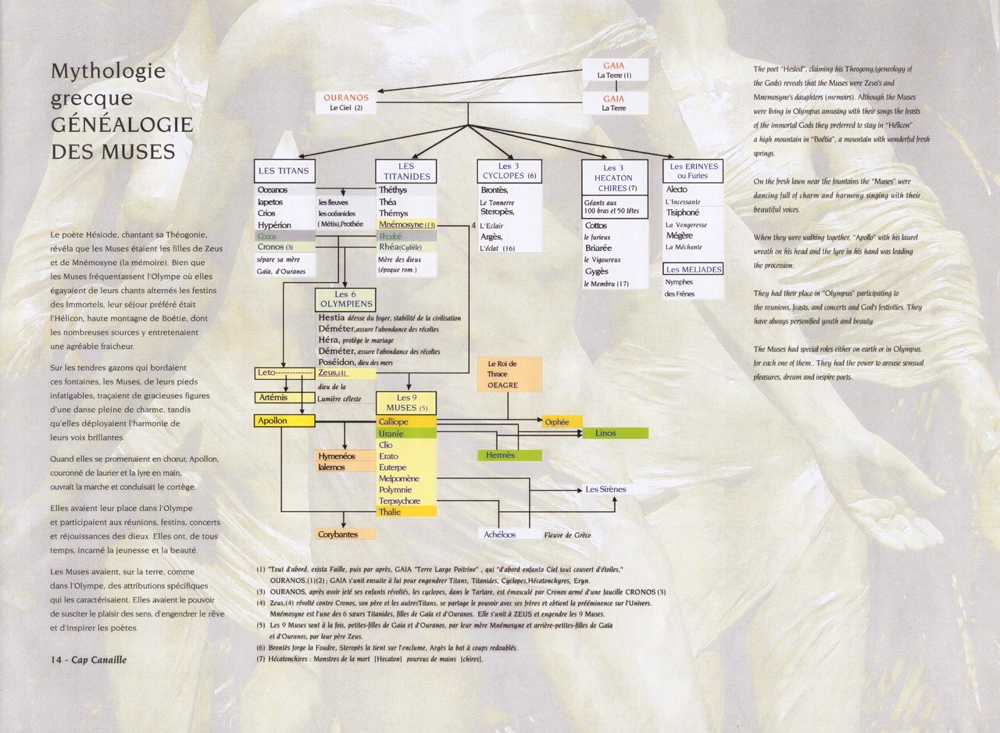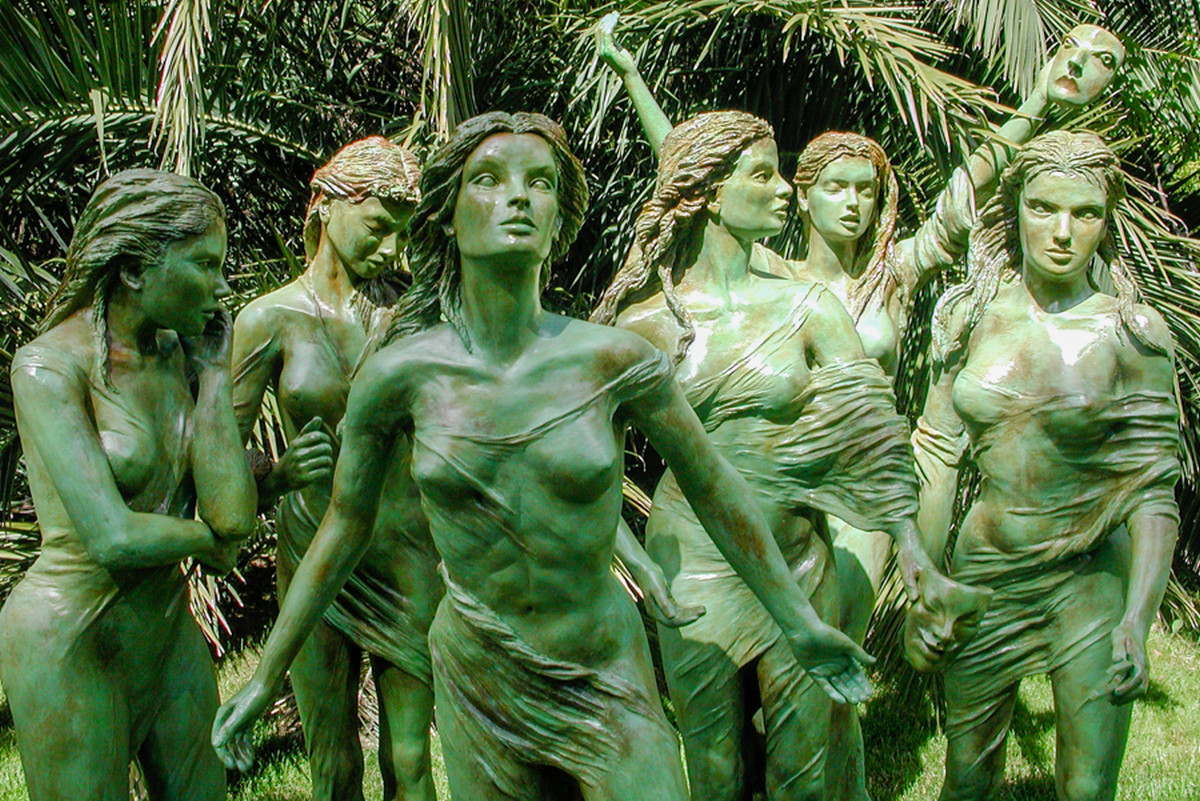
About This Project
The Muses of Cassis
Integrated into the façade of the Médiathèque de Cassis.
Terpsichore
Terpsichore was credited with dance and, in the later tradition, with dramatic choruses and lyric poetry for some, and choral singing for others. In some versions, she also plays the flute. She’s the best-known Muse in the Anglo-Saxon world, which has coined the adjective “terpsichorean” from her name to describe her dance allegiance. She is most often depicted as an alert dancer, crowned with garlands and holding a harp, to the sound of which she directs all her steps in cadence.
” Terpsichore, face up, arms slightly thrown back… empty hands, in a rush… I wanted her free… dancing and light… airy… carried towards the future. “
Euterpe
Muse of music and lyric poetry, Euterpe presided over the festivities. She was part of the procession of Dionysus, with whom she invented the dithyramb, the basis of Greek tragedy. She is often depicted as a “graceful young woman, holding a flute, sometimes a music book.
” Sculpting Euterpe, I was inspired by a very beautiful young woman, tall, powerful, strong-willed and with a radiant presence… The tuning fork, a charming little musical tool, but nevertheless fork-shaped, that she holds in her left hand, somehow translates the warrior side, too, of the Muses. “
Melpomène
Initially, Melpomene presided over song and musical harmony, then became associated with Dionysus and became the Muse of Tragedy. Classically, his demeanor is grave and serious. Wearing cothurns, she is richly dressed. She holds a scepter and crowns in one hand, and a bloody dagger in the other.
” Brandishing a tragic mask, she wears an expression of inner pain. The closed eyes, whose globes seem to move beneath the lids, the half-open mouth revealing the teeth, the arms raised to the sky in a gesture of despair, intensify his sorrow and give a more dramatic sense to the character. “
Thalie
Thalie was first and foremost a pastoral deity, protector of plants, seeds and herds, who taught men to cultivate the land. Later, he was credited with comedy and light-hearted poetry. Classically, his head is crowned with ivy, his feet shod with brodequins. She’s a graceful, playful girl, also depicted holding the grimacing mask of the Comédie.
” I really enjoyed sculpting the one that was to represent Thalie. She is “captured” in a “snapshot”, caught in the middle of a word, mouth forward, erect, neck outstretched, present and dilated, holding a grimacing mask. “
Calliope
Calliope is the most eminent of the Muses, embodying great eloquence, epic poetry and the art of writing. Zeus, her father, had invested her with the highest authority. She drove her sisters when they went to Mount Parnassus, in Phocis, to meet Apollo, God of Music. She is depicted as a majestic-looking young girl, her forehead girded with a golden crown, adorned with garlands and usually holding a trumpet in one hand and a roll of paper in the other.
” I wanted to depict Calliope as a thoughtful, concentrated person, her gaze lost in a kind of perplexity… I took the liberty of having her hold a feather… a goose feather? … but would it not have been a Siren feather that remained in her hands, after she had stripped them of their finery with the help of her sisters? “
Erato
Erato originally presided over erotic poetry and sacred nuptials. Later, it was also associated with lyric and anacreontic poetry. She’s a young nymph, lively and playful, crowned with myrtle and roses. In her left hand, she usually holds a lyre, and in her right, a bow. Next to her stands a little Amour, and sometimes turtle-doves peck at her feet.
” This is the first of the six Muses I sculpted. I did it in one go, very quickly, without a model, with a great sense of freedom. Eyes lowered to the turtledoves, soft and collected for a few seconds, she holds a flute in her left hand. I preferred to replace the lyre and bow with a more contemporary instrument. “
Date
mars 19, 2019

